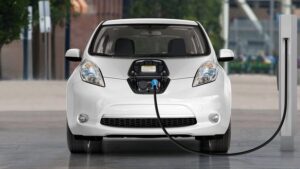
Ukraine at the end of the first quarter or beginning of the second quarter of 2022 will launch a program to subsidize the interest rate for leasing electric vehicles, Deputy Head of the Office of the President of Ukraine Rostyslav Shurma has said.”In Germany, France, Italy, 70% of car purchases are leasing at a cost of 0.5-1.5%. We have 12%, 15%, 17%. In four years, a person pays the cost of a car twice. Here we will launch the same program [subsidizing the interest rate], but not with all cars, but with electric vehicles. This will stimulate a “green” transformation in the country,” Shurma said in an exclusive interview with Interfax-Ukraine.Asked when the Ukrainian electric car will appear in this program, Shurma said that for the first time it will be assistance to citizens, and not to own production, which is not yet available in Ukraine, but in two years it can be extended to manufacturers who are localized production in Ukraine.”I know this industry well, in addition, we consulted with automakers. It takes two years to localize the production of electric vehicles. This program will operate in a universal form for two years, and then will extend to manufacturers who have localized production. We send such a signal to the market: if you want to keep your product competitive not only now, but also in two years, do localization,” he said.
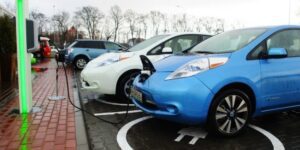
Registrations in Ukraine of new and used electric vehicles in 2021 increased by 18.9% compared to 2020 – up to 8,541 units, while registrations of new cars accounted for 14.2% versus 8.9% a year earlier, the Federation of the Automotive Industry of Ukraine (FAU) reported. “The year ended positively. In December, the number of registrations per month exceeded 900 for the first time, amounting to 928 electric vehicles – twice as many as a year ago, and 8% more than in November,” the report says.
At the same time, the three market leaders remained unchanged – Nissan, Tesla, Chevrolet, which together hold 55% of the market.
According to the above statistics, the leader of registrations Nissan (market share 26.1%) last year showed a slight increase (by 1%, or 26 cars) – up to 2,227 units (for 11 months showed a fall of 1%).
At the same time, Tesla registrations (19.6% of the market) decreased by 16% – to 1,670 units, and Chevrolet (with a 9.4% market share) increased sales by 54% – to 802 units.
“It is interesting that almost all brands have increased sales – except Tesla and Kia. In particular, Audi doubled sales, which allowed it to break into the top ten to the 7th place,” the report says.
In the ranking of brands, after the top three, there are Renault (an increase of 76%, to 551 units), Volkswagen (by 80%, to 550 units), Hyundai (by 43%, to 363 units), Audi (up to 334 units), Mercedes-Benz (up 28%, to 236 units) and Kia (down 13%, to 154 units).
Fiat failed to stay in the top ten, which in 2020 took fourth place, and in 2021 – 12th.
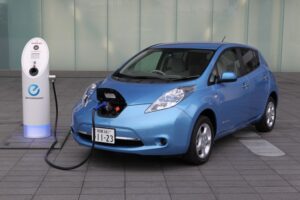
Registrations in Ukraine of new and used electric vehicles in January-September 2021 increased by 7.8% compared to the same period in 2020, to 5,854 vehicles, including 12.8% of registrations accounted for new ones, the Federation of the Automotive Industry of Ukraine has said. According to a message on the federation’s website on Monday, citing data from the Ministry of Internal Affairs, in the third quarter the number of registrations (primary ones plus cars imported from abroad with customs certificates or declarations) increased by 21.7% compared to the first quarter of this year and by 11.7% compared to the third quarter of last year, up to 2,303 vehicles.
“The third quarter turned out to be the most successful in the entire electromobility history of Ukraine,” the federation says.
The federation also notes that the share of new cars in total registrations is gradually increasing (according to the results of the first half of the year, it was 10.3%).
The first and second places in registrations are traditionally occupied by Nissan and Tesla, but their sales have been declining for several months (compared to last year) – over the nine months of registration, Nissan decreased by 5%, to 1,657 cars, and Tesla – by 25%, to 1,150 cars.
At the same time, Chevrolet, occupying the third position, more than doubled its share – from 296 cars to 666, and Chevrolet Bolt EV is the second most popular model after Nissan Leaf, accounting for 10.8% of the market (the leader has 26.7%).
Sales growth was also shown by Renault (by 68%), Volkswagen (by 11%), Hyundai (3%), Audi (93%), Mercedes-Benz (by 14%), which ranked further in the ranking.
According to the graphical data provided in the message, cars of 2017 production year (1,107 units), 2019 production year (946 units) and 2018 production year (819 units) continue to be registered most often, and cars of 2021 production year have 380 registrations.
The federation also notes that in September this year, registrations of electric vehicles increased by 28% compared to September last year and by 16% compared to August this year, to 846 units.
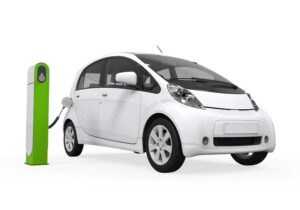
Registration of new and used electric vehicles in Ukraine in January-June 2021 increased by 5% compared to the same period in 2020, to 3,550 units, including 89.7% of registrations accounted for used vehicles, the Federation of Automotive Industry of Ukraine has said.
According to a post on its website based on data from the Interior Ministry, in the second quarter, the number of registrations (primary plus cars imported from abroad with a customs certificate) increased by 14% compared to the first quarter of this year and by 7% – with the second quarter of last year, up to 1,891 units.
According to the graphic data provided in the report, the most frequently registered cars were those manufactured in 2017 (824 units), 2018 (502 units) and 2019 (454 units), and cars of 2021 with 154 units.
At the same time, a lot of cars registered were produced in 2016 (376 units), 2015 (264 units), 2014 and 2013 (253 units and 255 units, respectively) and 2020 (316 units).
In the first half of the year, the top three brands remained unchanged – Nissan, Tesla and Chevrolet.
However, if Nissan registrations decreased by 14%, to 994 units, Tesla lost 24% – to 688 units, then Chevrolet tripled sales – to 542 cars, and the Chevrolet Bolt EV model became the second most popular model in Ukraine after Nissan Leaf.
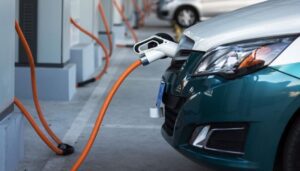
The initial registrations of electric vehicles in Ukraine (new and used) in May 2021 decreased by almost 36% compared to May last year, to 622 units, including registrations of cars decreased by almost 36%, to 590 units, and commercial grew by 14%, to 32 units, according to the Ukrautoprom association.
According to a post on its website, the share of new electric cars in total registrations accounted for 11% (67 units).
The total number of registered passenger cars is 66 new and 524 used, and there is only one new commercial vehicle.
Compared to April this year, registrations in May decreased by 11%.
The most popular electric car in May was once again the Nissan Leaf with 186 cars of this model that received Ukrainian registration (in April – 198).
As reported, Nissan Motor Ukraine, the official distributor of Nissan in Ukraine, announced the start of official sales in Ukraine in the summer of the updated Nissan Leaf (before that, only used ones were imported to Ukraine), and in May announced that in the offered rich configuration N-Connecta the price starts from UAH 976,490.
The second result in May 2021 was shown by Tesla Model 3 with 66 registrations, and the third was AUDI E-Tron (33 registrations). The fourth most popular was Tesla Model S with 32 registrations, and Chevrolet Bolt closes the top five of the May electric car market with 29 cars.
The most popular commercial electric vehicle remains the Renault Kangoo Z.E. with 24 registrations.
According to the association, in January-May, a little more than 3,000 electric vehicles passed the first registration in Ukraine, which is 12% more than in the same period in 2020, with 90% of them being used.
In particular, registrations of new cars increased by 36.5% versus January-May 2020, to 299 units, used ones – by almost 10%, to 2,716 units.
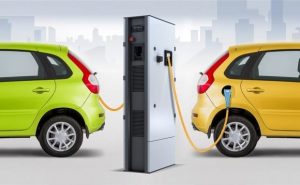
Initial registrations of electric vehicles (new and used) in Ukraine in 2020 decreased by 1% (or 87 units) compared to 2019, to 7,455 units, including 91.3% used cars (6,803), according to the Ukrautoprom association.
According to the data on its website, 7,095 passenger cars (of which only 9% are new), 359 commercial vehicles (3% new) and one electric bus (manufactured in 2019) were registered over the year.
At the same time, the average age of the used electric registered passenger cars was five years last year, of commercial vehicles seven years.
Thus, compared to 2019, the registration of used cars in 2020 decreased by 2% (by 135 cars), and new ones increased by 8% (or by 48 cars).
The most popular electric vehicle in Ukraine remains Nissan Leaf with 2,180 registrations, the second place is taken by Tesla Model 3 (some 865 cars), and the third by Tesla Model S (753 cars). The fourth position is taken by Chevrolet Bolt with 474 registrations, and the Tesla Model X closes the top five most popular zero-emission vehicles with 366 registrations per year.
The best result for new electric vehicle sales was shown by Audi E-Tron, which was chosen by 122 buyers.
The commercial electric vehicle market was dominated by Renault Kangoo Z.E. with 304 registrations, including only seven new ones.
The association also said that in December 2020, the Ukrainian vehicle fleet was replenished with 632 electric vehicles, which is 8% more than a year earlier, including 598 cars (more by 7% compared to December 2019) and 34 commercial (more by 36%).
The share of used cars in December last year in the passenger segment was 86%, in the commercial segment 97%.